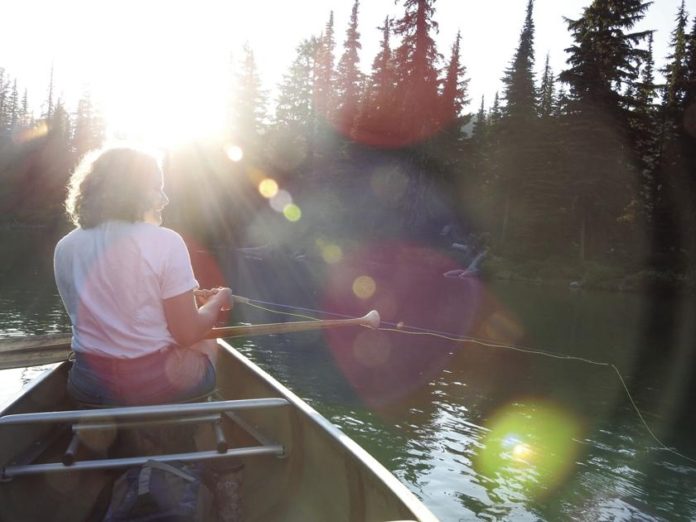Stroll into any fly shop in Eastern Oregon and chances are the person that walks in behind you has never fly-fished before. They’re looking to get into the sport and don’t know how to start.
Here’s what happens. Somebody has invited them on a trip. Perhaps it’s a “bucket list” thing — they need to check it off as something they’ve done. Maybe they just moved here from California and have always wanted to fly-fish. Maybe they saw a movie with the young Brad Pitt casting a fly on a rollicking cutthroat stream.
For whatever reason, they are here and ready to fly-fish. They’re a bit scared, afraid what other people might think when they see them hang a fly in a tree.
Here’s the thing. We all start at zero, ground level. No one is born knowing how to tie a knot or execute a roll cast or dead-drift a dry. We have to learn it. Sometimes at an early age. Sometimes later. Fly-fishermen, despite our self-righteous tendencies, are welcoming. We like to see people learn to cast, select a fly and take it to water.
Yet the first-timer’s fear, it lingers.
Picture the president of a successful company. He does everything well, he is admired, successful and now he wants to fly-fish. He knows he has no skills, he knows he has to start at ground level and work his way into a sport in which he is a latecomer. Some people never get past this point. It is time to face the fear, pick up a rod and learn a new way of life. That’s what it is.
Let’s say you are fishing next week. This might be the first time, it might be the first time in a long time. If you want to hide the fact you are a rank amateur, here is how to get ready for the first trip.
Take a casting lesson
You’re going to have to admit to someone that you don’t know how to cast. Go into a fly shop. Schedule a lesson. Learn the simple pick-up and lay-down, the basic overhead and the roll cast. It can all be taught and absorbed in an hour.
Learn a knot
Go online and learn to tie the improved clinch knot. That’s the only one you really need to know right now. Later on you will want to learn the blood knot and the surgeon’s knot, but that can wait.
Get a fly rod
Don’t borrow someone else’s gear. Get your own. It doesn’t have to cost a lot of money. There are combo outfits on the shelves at sporting goods stores. Put it together, watch some YouTube videos and practice simple casts in the backyard.
Hang out in a fly shop
Wander around, buy a fly box and a few trout flies, look at the recommendations of where to fish that are usually posted on the wall. Listen to other anglers. You need to pick up a few buzz words to know what they’re talking about. Lines, line weights, rod actions, leaders, tippets, wet flies, dry flies, nymphs. There is a lot to learn, but it is easy to pick up.
Read a comic book
This is important. “Curtis Creek Manifesto” was written in a style that appeals to the 11-year-old in all of us. Pick it up and read it cover to cover. Other options: “The Secrets of St. Anthony’s Creek” by Michael Rahtz or “Get Started Fly-fishing” by Craig Schuhmann. All are available from Frank Amato Publications and can be found in any fly shop. Either book will help to lay a foundation for a fly-fishing future.
Buy a funny hat
Stick a fly in it. Stick another fly in it. You need a hat anyway, to shade the eyes while you watch for fish. If you have flies in your hat it implies you have fished before and rejected those patterns for something better.
Get a fishing license
And not just a day license. Don’t wait for Free Fishing Weekend. Get a license for the whole year. You’re either a fisherman or you’re not.
Last summer my youngest daughter bought her fishing license and we packed the canoe in the back of the Ford. At the lake, I made her leave her spinning rod in the truck.
“It’s time to continue your fly-fishing education,” I said.
She frowned when I handed her a 3-weight fly rod. But she remembered what she knew about fly-fishing and caught and released nine trout.
“You have a fly rod of your own,” I reminded her as we put the boat back on the truck.
“Yes, I should use it more.”
That’s what I was thinking.
———
Gary Lewis is the author of “Bob Nosler Born Ballistic,” “Fishing Central Oregon” and other titles. To contact Gary, visit www.garylewisoutdoors.com.
Credit: Source link






























